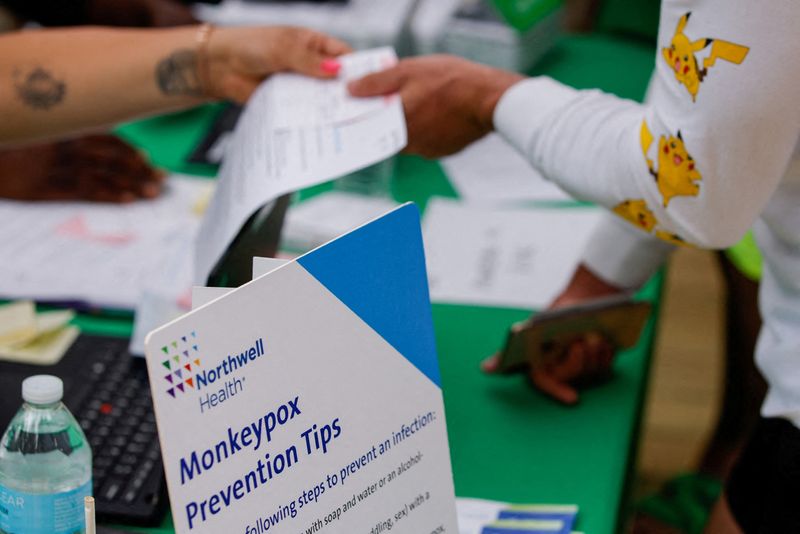Explainer: Monkeypox in the U.S. – Where could it spread next?
2022.08.07 14:50

Budrigannews.com – The United States declared monkeypox a public health emergency last week, an effort to bolster the U.S. response to contain the outbreak.
The virus continues to be largely transmitted among gay and bisexual men, but experts say the disease could spill over into other populations, especially due to vaccine shortages. Monkeypox is spread by contact with puss-filled sores and is rarely fatal.
Here is the state of monkeypox now and some other the populations U.S. experts believe may be at risk:
WHO IS GETTING MONKEYPOX NOW?
Last month, the World Health Organization declared monkeypox a global public health emergency. So far, 80 countries where the virus is not endemic have reported 26,500 cases of monkeypox, according to a Reuters tally.
In the United States, 99.1% of U.S. monkeypox cases occurred among those assigned the male sex at birth as of July 25, according to a technical report by the U.S. Centers for Disease Control and Prevention (CDC). Among male patients, 99% reported having sexual contact with other men.
About 38% of cases occurred in among white, non-Hispanic males. Another 26% were in Black males and 32% in Hispanic males.
The pattern of sexual transmission in men is not typical. In Africa, where monkeypox has been circulating since the 1970s, 60% of cases are in men, and 40% occur in women.
One reason may be that the virus appears to be “very efficiently transmitted through anal receptive intercourse and to some degree oral sex,” said Dr. Celine Gounder, an infectious disease epidemiologist and an editor-at-large at Kaiser Health News.
WHO ELSE IS AT RISK?
Although the current explosion of cases has occurred in men, experts say there is no biological reason the virus will remain largely within the community of men who have sex with men.
“We certainly know it’s going to spread to family members and to other non-male partners that people have,” said Dr. Jay Varma, director of the Cornell Center for Pandemic Prevention and Response. He said the virus could also spread through massage parlors or spas.
The real question, he said, is whether it spreads as efficiently in those groups as it does among close sexual networks of men who have sex with men.
Experts point to the way HIV spread as a possible indicator for where the virus will go next.
“My greatest fear is that as we try to contain this, it’s going to seep along the fractures in our social geography and go where HIV did, and that’s going into communities of color in the rural South,” said Dr. Gregg Gonsalves, an associate professor of epidemiology at Yale University and a leading HIV/AIDS activist.
Those are places with limited infrastructure for testing, vaccines and treatments.
Gounder is especially concerned about infections among Black women, who account for the largest share of new HIV infections in the United States, and already suffer significantly higher rates of maternal complications and deaths.
WHO ELSE MIGHT BE AT RISK?
Other at-risk settings include college dormitories, health clubs and sports teams.
Gounder is aware of some sports leagues that are preparing for possible infections, noting that sports such as wrestling involve close skin-to-skin contact.
Wrestling, football, rugby and other sports teams have previously had outbreaks of the superbug MRSA, according to the CDC.
“I think it is something we need to be thinking about and prepared for,” she said.
Employers may also need to start preparing. Gounder said some theaters in New York, for example, are considering how they might protect their workers from possible monkeypox infections through contact with shared costumes.
“We’re still in the beginnings of that, but I am encouraged to see that some are already thinking about that.”








